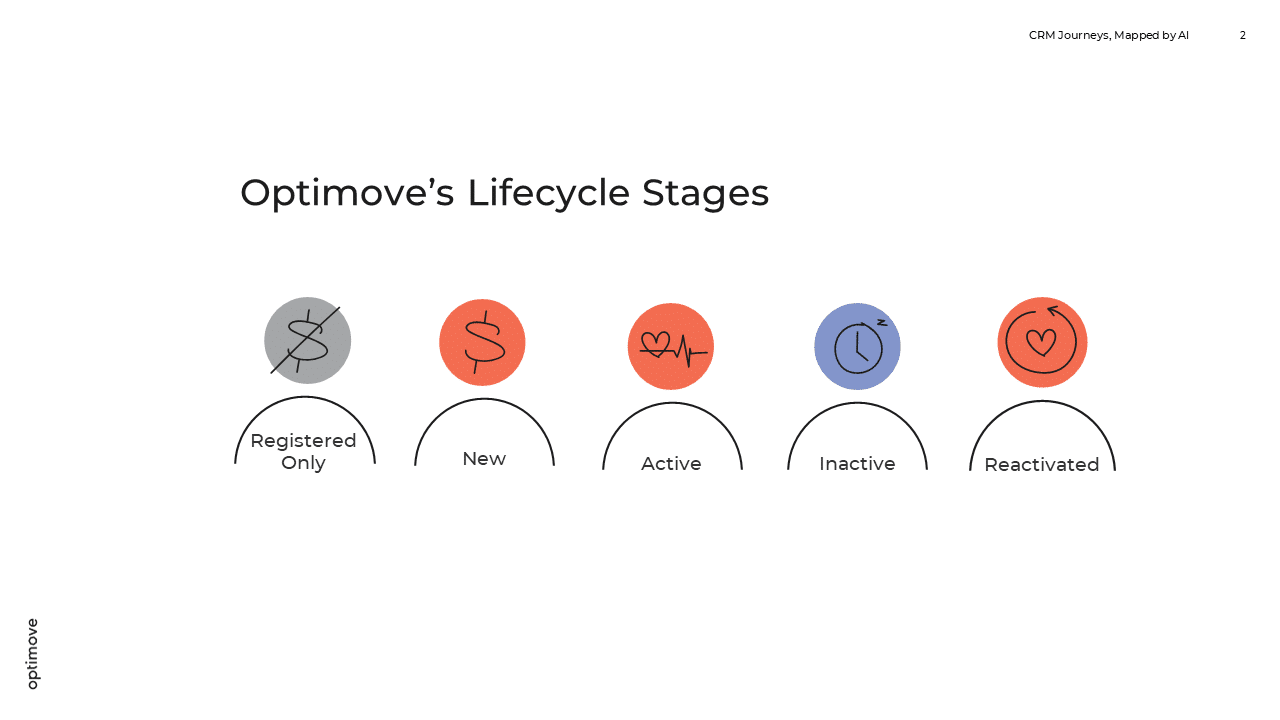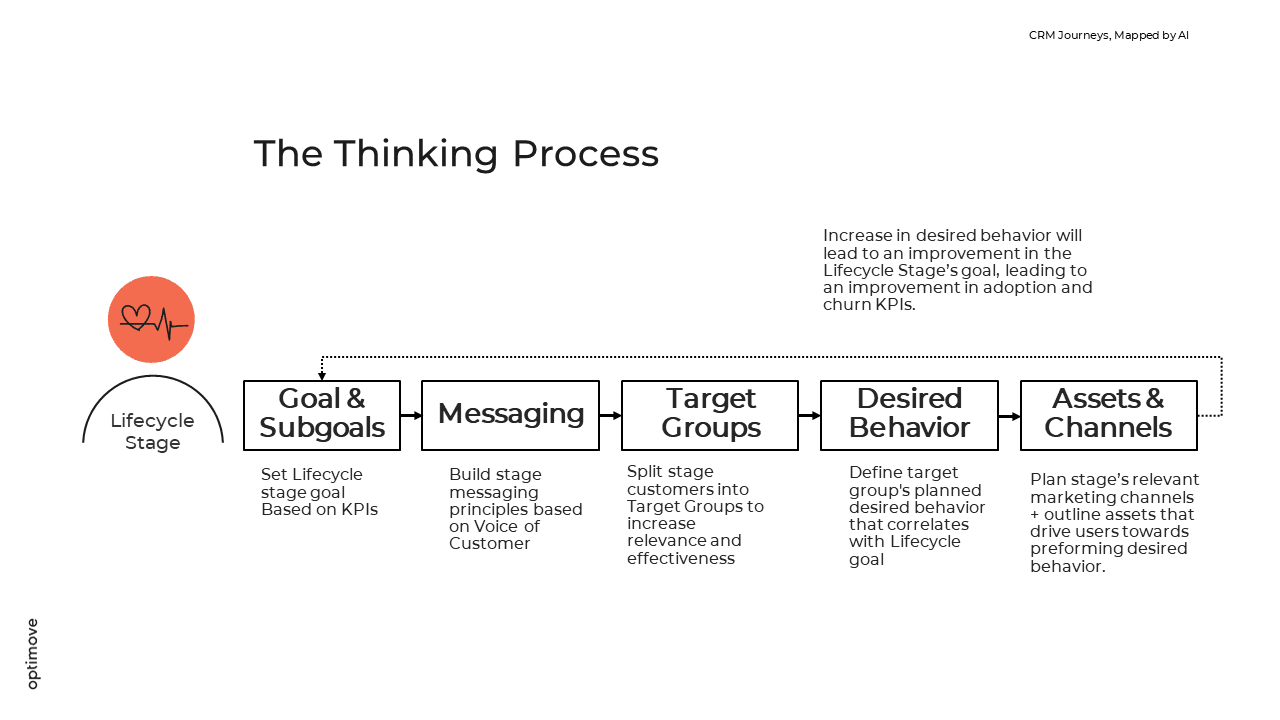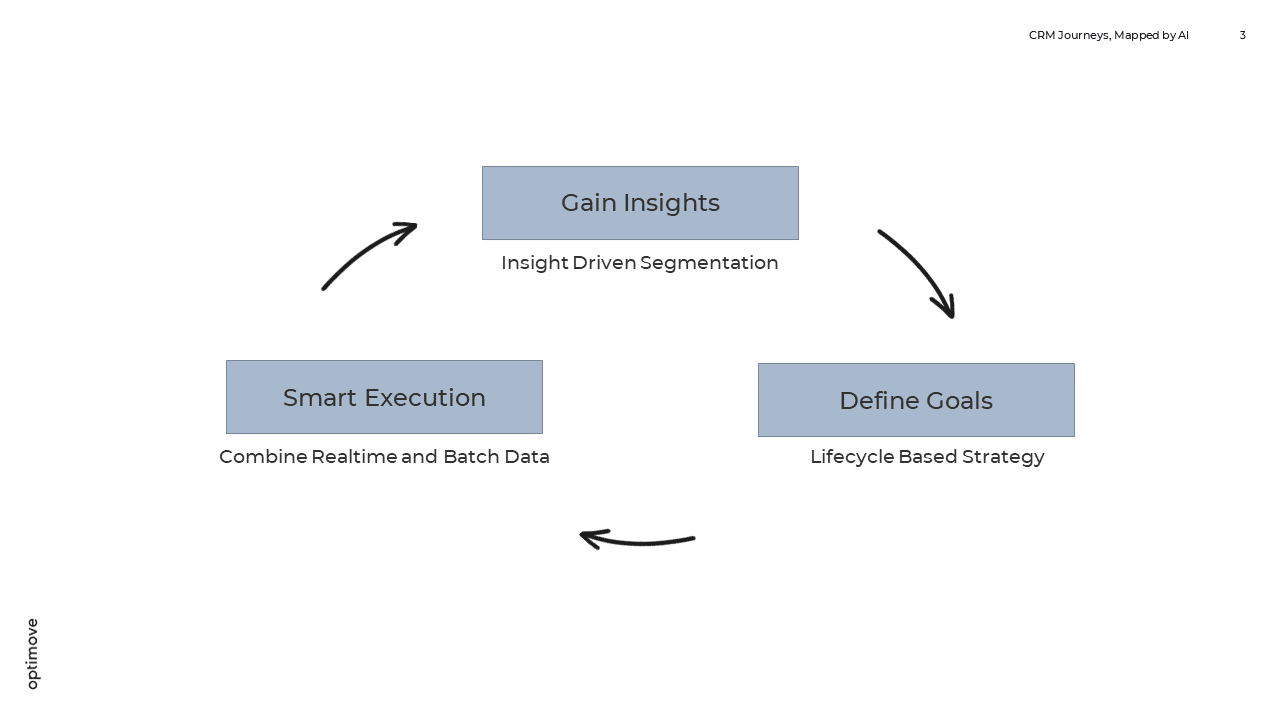
AI and the Retail Marketer’s Future
How AI transforms strategy and processes, driving the adoption of Positionless Marketing
Exclusive Forrester Report on AI in Marketing

Newsflash! Building strong relationships with our clients is a strategic goal for us at Optimove. Frankly, I was hired for that purpose precisely - to drive growth through our existing customers.
But to achieve such an impactful goal as growing customer lifetime value meant scaling personalization, going from tens to hundreds of customer segments, deploying a lifecycle-based CRM strategy, accounting for realtime behavior, and combining it all with robust orchestration technology.
Sheesh, that's enough to make any old-fashioned marketer run away, screaming, "you manage hundreds of segments!".
Fittingly enough, this is EXACTLY what Optimove is all about; the value we bring our own clients; what we preach, blog in-blog out. For me, it was like joining a chocolate factory as a "visitors happiness manager"; I had all the candy I needed right under my nose.
And so, my course of action was obvious: I'll just use Optimove to communicate with our clients and increase retention and adoption. Using a unique framework and Optimove's segmentation and orchestration capabilities, I could scale our CRM marketing from only 18 campaigns to 100+ in under six months. And no one had to run away or scream.
Want to know how did I do it? Fantastic! That's what this new blog series is all about. Here, and in the two following parts, I will take you through how we at Optimove walk our own walk and use our product and philosophy to boost retention and adoption metrics – by deploying a lifecycle stage strategy. And hey, if we can do it, anyone can.
Strategy: Building a customer insight-driven marketing plan
Execution: Implementation of multichannel orchestration
Testing and reiteration: The use of goal-based incrementality measurement
Here, we will focus on #1 – the 3-step process I created for building a customer insight-driven strategy to communicate with Optimove's clients, and show you how to implement it as well. And like every good process, it starts with… you guessed it – data.
When building a CRM strategy for existing customers, one should first ask themselves which groups make up their customer base and how each group differs from one another.
One primary way to do so is segmenting them by "lifecycle stages." Lifecycle stages help us define the "customer moments" in which we'd want to communicate with our customers in each step of their relationship with our product/service. It is one of the foundational concepts of Optimove.
Some of the questions I wanted to answer were:
Since my strategy focuses on improving product adoption, retention and time-to-value, I wanted to gain insights into Optimove's customers and learn more about their product "moments" – the jobs-to-be-done and use cases in which each segment uses Optimove.
I launched our Optimove for Optimove instance ("dashboard") and went straight into Optimove's Customer Explorer, the go-to place for discovering customer insightsin Optimove. I began exploring each lifecycle separately and analyzing the product behavior of each one.
After diving into each lifecycle stage and understanding our main segments' behavior, I doubled down on research and interviewed key stakeholders and customers to get some additional points of view.
I learned that a mix of qualitative and quantitative analysis is key to understanding each lifecycle's habits - and you can quickly adopt this as the first step for every significant campaign that you plan.
In "Optimove for Optimove," we split our customers into five lifecycle stages: Registered-only, New, Active, Inactive, and Reactivated. Other business models may set different lifecycle stages.

Lifecycle-based marketing allows you to set clear goals for each customer stage and create dynamic customer journeys that adapt to the customer's behavior as they move through lifecycle stages.
Ideally, I'd want to drive all client users (aka "customers") towards the Active lifecycle - and have them stay there! Additionally, I want to drive them towards certain behaviors that maximize their value in Optimove, "promoting" them to more advanced Active segments (target groups).
As a product marketer, I wanted to "integrate" that lifecycle-based approach into the product marketing process. Therefore, I created a framework that allows us to break every lifecycle stage into components, detailing every stages:

Let's use our "New" lifecycle stage to demonstrate the thinking process.
New is a unique lifecycle stage, as it isn't as dynamic and flexible as other stages. New customers stay new (incubating) for 90 days.
While different customers may have different motivations and progress at different speeds, the welcome series that takes place during their first days in the New lifecycle is the only "static" (step-by-step, rule-based) communication series we run for our customers. I have 90 days to onboard them, help them with orientation, make them understand the value of our product, and make them eager to explore further. For that reason, my goal with New customers was educational.
Optimove is very robust, and getting a handle on things requires some guidance, so the messaging revolves around simplifying the product experience and reducing anxiety.
I set up my segments (target groups) based on the different features I wanted the clients to learn about to serve the desired behavior – learn more about Optimove's core features to reduce the "time to the first campaign." Then, I built a communication plan that includes the following channels and assets:
Build your insight-driven marketing plan based on the insights gathered in step 1. Remember, each campaign in each lifecycle aims to impact a top-level metric that moves the needle and is simple to measure. Use the above framework to move from a top-level strategy to a detailed asset+campaign+messaging plan.
Next, we wanted to make sure our strategy stays aligned with our KPIs. So, we need to learn how our customers' behavior changes continuously, communicate with them in a more personalized way, and optimize our campaigns accordingly.
For that, we needed to leverage Optimove's batch and realtime data processes.
Which brings us to...
One of the most powerful things we do is combine batch and realtime data. Batch data allows for continuous analysis of trends and long-term behaviors. Realtime data helps us create an agile marketing process, reacting to customer behavior according to the most updated data.
We put those hands together.
And so, to add a contextual layer to Active lifecycle customers, I used Optimove's realtime solution. By doing so, we leveraged web and in-app activity data to react to customer behavior in realtime and help them achieve their goals. This method allowed me to support our customers' activity fully.
My communication plan for the "Active" lifecycle stage included the following channels and assets:
Leverage Optimove's batch and realtime data processes so you'd have visibility into important metrics such "first campaign execution," "page visit," or "resolved support tickets" and combine them with realtime behaviors such as “began creating a campaign”.
Use this to tackle different customer moments within each lifecycle, with extremely granular messages that are all focused on the lifecycles stage's goal.
Use this data to execute the most personalized, creative campaigns you can imagine.
Implementing the Above Process
Yes, you can use the same approach that I use, which basically boils down to:

Our customers are going through so many different moments with our brand.
Planning, mapping, and having the right tools in your kit is the thing that makes you a strong CRM marketer. The above is only the tip of the iceberg of what you can achieve using a lifecycle-based strategy in Optimove.
Explore your customers using our different explorers > set a goal for each lifecycle you have > create a set of communications that support the plan. Then, reiterate based on results.
And there you have it; I DID IT!
This was my way of leveraging Optimove to grow from tens to hundreds of segments in only six months.
Stay tuned for the next blog post, where I'll share my multichannel marketing orchestration approach that takes this hyper-segmentation to the next step.
Exclusive Forrester Report on AI in Marketing
In this proprietary Forrester report, learn how global marketers use AI and Positionless Marketing to streamline workflows and increase relevance.


Writers in the Optimove Team include marketing, R&D, product, data science, customer success, and technology experts who were instrumental in the creation of Positionless Marketing, a movement enabling marketers to do anything, and be everything.
Optimove’s leaders’ diverse expertise and real-world experience provide expert commentary and insight into proven and leading-edge marketing practices and trends.


